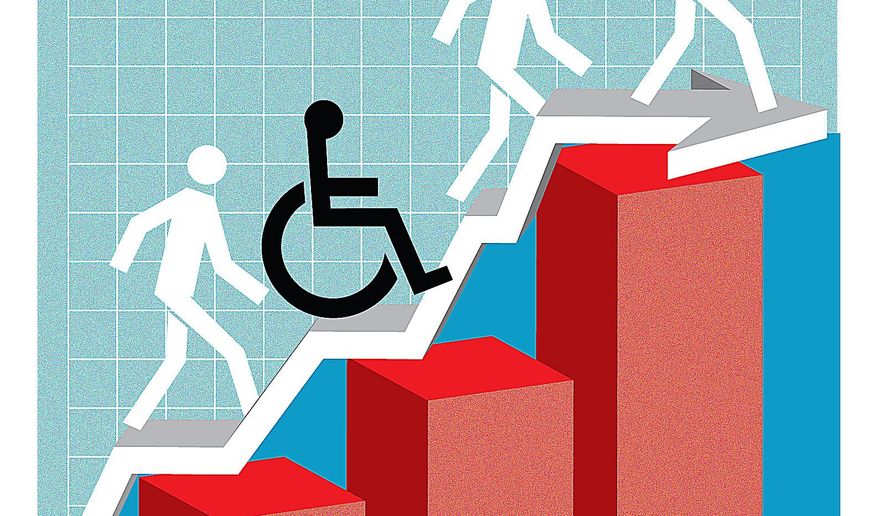OPINION:
Without question, the U.S. economy is booming. Millions of Americans have gone back to work. The unemployment rate is at a historic low. But one question remains. Is the economy working for everyone?
No, it’s not.
Tens of thousands of former workers who want to be working again are not because they’ve been sidelined by a disability. This is a problem, but also an opportunity. Seizing it will mean that more Americans will have an opportunity to work. At the same time, the Disability Insurance Trust Fund will be more stable over the long term, and more earnings from workers will help shore up the troubled Old Age and Survivors Insurance program. Getting this done, though, will require bipartisan commitment and focus.
The Social Security Trustees recently announced the Disability Insurance Trust Fund will be able to pay full disability benefits until 2052, 20 years later than indicated in their previous report. Also, the trustees said that disability claims have declined steadily since 2010.
As the employment picture has improved, employers are hiring and retaining more people with disabilities. That’s good news. But the unemployment rate for those with disabilities is still nearly double the national average of 3.2 percent. And that’s the case even though the monthly employment data do not account for 8.5 million people who receive Social Security Disability Insurance (SSDI) benefits. Some former workers in this population want to rejoin the workforce if their medical condition stabilizes, but need guidance through the complicated Social Security Administration (SSA) rules for returning to work.
An enhanced and improved Ticket to Work program, which operates within the SSA, helps more of these beneficiaries find jobs again and move off of benefits. Ticket to Work (TTW) and other work incentives give beneficiaries personalized return-to-work planning, benefit coordination, vocational guidance and job interview and placement assistance.
The Social Security Administration authorizes Employment Networks (ENs) to provide these services at no cost to Social Security beneficiaries throughout the return-to-work process. They also help the individual navigate the unseen challenges of reporting their earnings to Social Security, and to minimize overpayments and protect their benefits while they make a successful (or unsuccessful) return to work.
Participation in the program, established by Congress in 1999, has ticked up in recent years, but more can be done. Ticket to Work remains underutilized. According to the Social Security Administration, only 30 percent of beneficiaries know that the Ticket to Work program exists and only 37 percent are aware they can participate in a Trial Work Period that protects their benefits while they try to work again. In a job market this strong, this lack of knowledge needs to change.
Beneficiaries should be told that they have access to return-to-work assistance as soon as they begin the application process for Social Security disability benefits. What’s more, employers should be made aware of the program so they know that this local and national talent pool is available to them. The Social Security Administration should prioritize return-to-work and benefits-counseling programs so that more beneficiaries can make the shift to employment when they are ready and medically able.
Federal lawmakers on both sides of the aisle should embrace these reforms. Both Democrats and Republicans can agree that everyone should have the opportunity to succeed in a thriving economy. Lawmakers have a chance to come together to make that happen. Lowering the barriers and unemployment rate for workers with disabilities and strengthening the health of the social safety net are sound policy and good politics.
• Kevin Nickerson is co-director of the American Dream Employment Network.




Please read our comment policy before commenting.